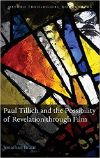- Author(s): Julianne Qiuling Ma Yang
- When: 2013-03
- Where: Source
Considered one of Northern Europe’s most renowned art film directors to date, Swedish filmmaker Roy Andersson has been hailed by critics and art cinemagoers alike for his unconventional visual and narrative style. Marked by his use of long, static shots filmed in wide-angle and deep focus, Andersson’s “tableau aesthetic” is intimately linked to his idea that films, like other art forms, can have an important function in contemporary society: to provoke social and moral awareness in its audience. Aiming to counter what he considers a “fear of seriousness” and a dearth of critical contemplation in modern society and media, Andersson uses his films and his distinct tableau aesthetic to explore the key social, political and philosophical issues of our times: the human condition, the problems of modernity, and the lingering legacy of past historical traumas.
This dissertation presents a study of Andersson’s aesthetic and thematic concerns. The central thesis is that his films continue and innovate key stylistic and ideological tendencies associated with modernist painting and theatre. The introductory chapter serves to justify why Andersson’s work represents a “modernist structure of feeling.” Besides giving an overview of the key ideas, themes and stylistic techniques that mark his films, the introduction explains the humanistic philosophy that is central to not only his aesthetic and thematic concerns, but also his approach to filmmaking itself. The topics that emerge from this introduction – including the function of Andersson’s distinct tableau aesthetic, the thematic richness of his films, and his position within contemporary Nordic cinema and global art cinema – serve as points of departure for the thesis proper.








